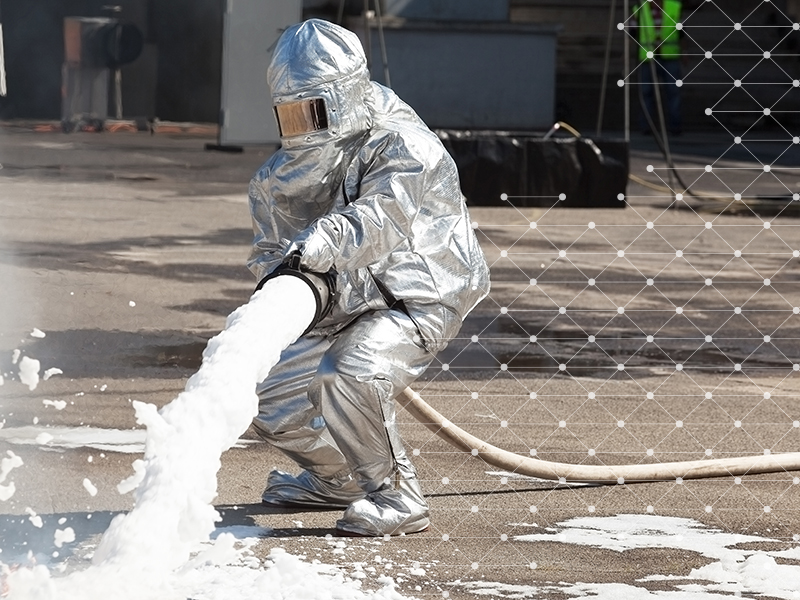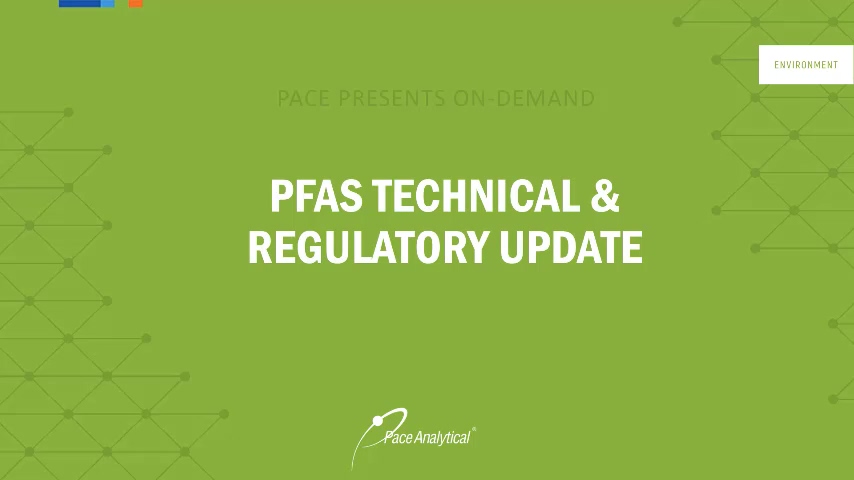4 Facts Airport Operators Need to Know About PFAS
At Pace Analytical®, we’re seeing a steady flow of inquiries from airport operators and municipalities concerned about PFAS contamination. In today’s post, I thought I’d break down our discussions into several FAQs and do my best to provide clear, concise answers.
Quick note: I’m going to assume this audience has a general understanding of what PFAS compounds are and why they are a problem. However, if you’d like a primer, please visit our PFAS overview page.
With that said, here are the four most common questions I get from people concerned about PFAS contamination at airports.
1/ Does all AFFF contain PFAS? If you’re reading this, you probably already know that the primary source of PFAS contamination from airports is the aqueous film-forming foam (AFFF) used to fight aviation fires. The surfactant characteristics of many per- and polyfluoroalkyl compounds make them particularly useful when putting out fires involving flammable liquids.
All AFFF contains PFAS. There are several Class B foams (the category of fire-fighting foams to which AFFF belongs) that are fluorine-free, but they are not approved by the FAA for fighting aviation fires in an emergency.
2/ Which PFAS compounds can be found in AFFF? The primary PFAS compound found in legacy AFFF is PFOS. There may also be trace amounts of PFOA in legacy AFFF as it was a byproduct of the manufacturing process.
Although this AFFF formulation was phased out of production in 2002 by the manufacturer (3M), the product has a long shelf life. Stockpiles still exist, and many states have not restricted their use. In addition, the FAA requires that fire-fighting equipment be tested yearly, so AFFF may be periodically discharged even if there is not an emergency.
Modern fluorotelomer AFFF does not contain PFOS, though it may still contain trace amounts of PFOA. More importantly, it leverages the surfactant qualities of short-chain PFAS, which studies show break down into at least two PFAS compounds: 6.2 FTS and PFHxA.
Though thought to be a safer alternative, some studies are starting to show evidence of some of the same toxic effects as long-chain PFAS. Currently, no states have issued rules or advisories for 6.2 FTS, but both Texas and Michigan have promulgated rules addressing PFHxA levels. As more evidence is gathered, these compounds and others will likely be the subject of increased scrutiny.
Finally, depending on the formulation of the specific AFFF used by the airport, there may be other PFAS present. Airport operators and other concerned entities should always check the manufacturers’ safety data sheets for specific formulations. And remember, even if the AFFF is no longer used, contamination may still remain.
3/ Which test method(s) should we use? This will depend on which PFAS compounds you need to test for and which matrices you plan to test. For the purposes of this discussion, let’s assume your primary concerns are PFOA, PFOS, and PFHxA. We’ll throw in 6.2 FTS in the event that compound starts garnering increased attention.
Unless the airport is a military installation, the first test methods to consider are the EPA’s drinking water methods. EPA test methods 537.1 and 533 are both capable of analyzing drinking water samples for PFOA, PFOS, and PFHxA. However, only 533 looks for 6.2 FTS. Note that 533 was specifically developed by the EPA to test for more short-chain PFAS compounds.
Download a list of compounds covered by EPA test methods 533 and 537.1.
If the matrix is something other than drinking water, a different method must be used. Currently, the EPA’s SW-846 Method 8327 is in draft form. This method can be used to analyze non-potable water (e.g., groundwater) and soil samples for PFOA, PFOS, PFHxA, and 6.2 FTS – as well a number of other PFAS compounds. However, it cannot be used for drinking water compliance, so even when finalized, Method 8327 may not be appropriate for all scenarios.
Some airport operators might choose to use Method QSM B-15 with isotope dilution, which was developed by the DoD for military installations. This method also covers all four compounds as well as additional compounds that may be present in an aviation environment. We have a chart in our Statement of Qualifications that shows which PFAS compounds are covered by QSM B-15 with isotope dilution for both aqueous matrices and soil. However, once again, the DoD methods cannot be used for drinking water compliance.
4/ How should we dispose of existing stockpiles of legacy AFFF? This is perhaps one of the most challenging questions an airport operator faces. If you use existing inventory, there’s always a chance you could expose your operations to increased liabilities. It remains to be seen whether the FAA’s requirement that AFFF be used in emergencies or its failure to ban AFFF from being used in training exercises will help protect airports from litigation. Most legal experts don’t seem to think so.
Currently, the DoD is incinerating its stockpiles of AFFF. While incineration might be one of the most environmentally friendly ways to dispose of unused AFFF, commercial airport operators should proceed with caution. Environmental groups have charged that incinerating PFAS releases these compounds into the air. There may be evidence to back up their claims.
We can’t tell you how to dispose of unused AFFF, but we can suggest that you should carefully review the risks before proceeding. Pace Analytical has also developed test methods and processes to test for PFAS in stack emissions. If you have questions on this, feel free to reach out to us directly.
What Does the Future Hold?
Both the DoD and the FAA are actively researching fluorine-free foams, and we will hopefully see a day when AFFF is no longer necessary. In the meantime, lawsuits and litigation are expected to continue from individuals afflicted by health problems possibly caused by AFFF and communities looking to offset cleanup costs.
If you have questions about PFAS testing or need assistance planning a project, please reach out to us directly. One of our advisors would be happy to help.





